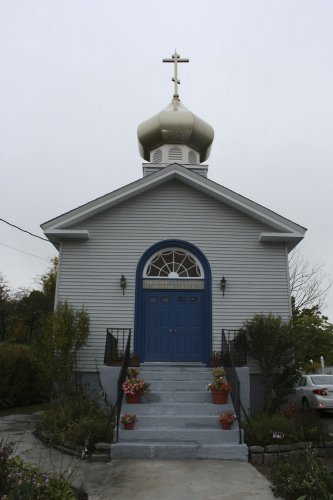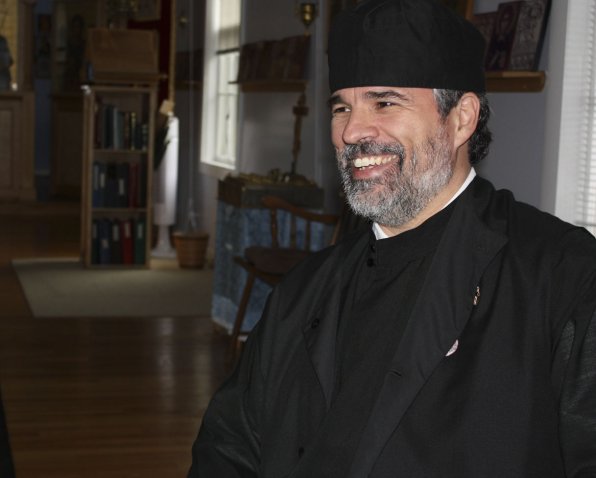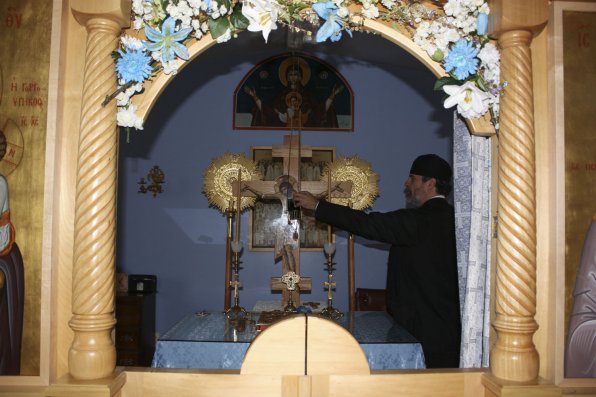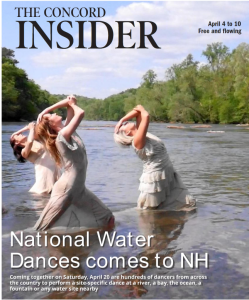Tucked neatly away on Union Street, steps away from the State House, is Concord's other golden dome, a modern architectural touch atop an otherwise historic structure.
The adornment is only fitting, of course. For it's inside the Dormition of the Theotokos Orthodox Church where you'll find an effortless blending of second-century traditions with tweets and Facebook posts, where images are equally comfortable on ancient backdrops and a Flickr page.
“You're talking better than 3,000 years and these signs and symbols still exist,” Father Alexander Buterbaugh, the church deacon, said. “We're not the church of what's happening now. It's yesterday, today and tomorrow.”
The church is housed in a structure originally built around 1840, one that began as a church and has been renewed as one after stints as a schoolhouse, a woodworking shop and a men's club. The building has been refreshed, both inside and out, and has become rather conspicuous ever since a fiberglass dome of gold was erected atop the church less than five years ago.
The fiberglass material won't fade or show wear, and the onion dome has helped increase the church's visibility in the community, even if you essentially have to be in front of the building to see it.
“I would have people who said, 'I walk by that building and it looks like it's missing something,' ” Buterbaugh said of the time before the dome was added. “We're very glad it's here, because it's tasteful and it adds to the look and feel. We'd like to think it's enlightened the community. And it's helped a great deal with getting our message out.”
That message is delivered to a parish of about 40 members, according to Father Andrew Snogren, the church rector, in traditional orthodox style. The priest serves facing in the same direction as the parishioners, rather than facing them, because “it's not a lecture,” Snogren said.
There are no pews in the church; rather, churchgoers stand during the service. They chant along with a small choir in a room lit primarily by oil lamps and candles as the church aims to create an atmosphere that isn't rigid while incorporating many second-century practices.
There is an icon screen near the altar featuring hand-painted icons shipped from Greece, and the process of worship is largely unchanged from hundreds of years ago. Every Sunday service ends with a full meal, served in the basement of the building.
“Orthodox worship marks all the senses,” Snogren said.
“That's what allows us to be timeless, that we've preserved those most important elements,” Buterbaugh said. “We help refresh people and renew them from the chaos they get outside our doors.”
Reaching those outside the doors is no longer as easy as it once was, and that's where the church's adherence to strictly ancient approaches ends. Buterbaugh created a website (dormitioninconcord.com) and also has established Facebook and Flickr pages. He hinted at incorporating Twitter in the near future, as well, and has already gained online interest from people in Greece, Russia, Finland, Jordan, India, Ukraine and Egypt.
“People are looking for something bigger than themselves, not here today, gone tomorrow,” Buterbaugh said. “We don't change the church, the church changes us.”
The building has certainly changed over the years. According to a 1987-88 survey, it was once known as the Union Primary School. From 1914 to 1931 it was a woodworking shop before a group of Greeks purchased it, made “significant alterations” and converted it into a Greek Orthodox church.
In 1940 the property was razed and the basement was added, before the Greek church purchased the building on North State Street that currently houses the Holy Trinity Greek Orthodox Church.
That transition opened the door for a men's club to move into the property in 1957. It wasn't until 1993 that Dormition of the Theotokos moved back in and began converting the building back into a church.
The altar had been left largely untouched by the men's club, but the rest of the property needed some work.
“It was a men's club,” Snogren said. “It had that men's club type of smell.”
No longer. The church put down new hardwood flooring, had the icon screen constructed and decorated the interior with traditional ornamentation and character. In the years since they continued to make small improvements, up to the most significant with the addition of the golden dome.
The dome itself highlights the church's approach. Snogren converted to the Orthodox church because its approach “all just made sense,” and the onion-shaped orb and six-foot cross atop it pointing toward the sky illustrate the focus not simply on ideologies but rather on personalizing them. Where an archetypal New England church has that spire steeple pointing towards the sky, the Orthodox golden dome points at the heavens while swelling at the base, signifying the congregation's inclusion in the service.
“It's not just looking to heaven, it's experiencing heaven,” he said. “It's not just an aspiration. There's some real content.”











